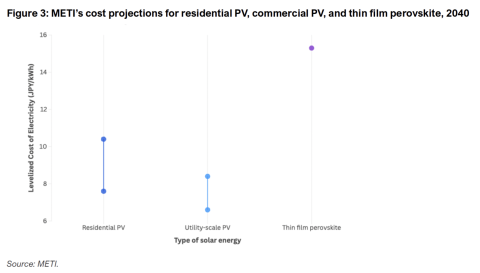Indonesia’s biomass cofiring bet: Beware of implementation risks
Download Full Report
View Press Release
Key Findings
PLN’s cofiring roadmap proposes to migrate its 114 existing coal-fired power plants to cofiring by 2024.
Low ratio cofiring is a mature technology – yet its application globally remains small in comparison to other technology options. This raises the question of economic feasibility.
The recent growth in Indonesia’s wood-based biomass industry is a result of increased international demand for biomass based on premium pricing. Whether a market would develop to respond to the low-cost biomass demanded by PLN remains an open question.
Executive Summary
Over the past year, Indonesia’s energy policy teams have devoted new resources to a plan focused on efforts to extend the life of PT Perusahaan Listrik Negara’s (PLN’s) coal-fired power fleet by switching to biomass cofiring. The plan focuses on leveraging PLN’s existing 18 gigawatts (GW) of coal-fired power plant capacity. The planners are betting that they can slowly increase biomass power generation by cofiring, a strategy that would potentially extend the life of older and under-utilized coal units while at the same time claiming credit for increasing the renewable energy mix.
PLN’s cofiring roadmap proposes to migrate its 114 existing coal-fired power plants to cofiring by 2024. The plan includes ‘feedstock increases’ between 2021 and 2023. The cofiring plan, advanced by the Ministry of Energy and Mineral Resources (MEMR), will require nothing less than the creation of a largescale biomass industry, to provide a stable cofiring fuel supplies anywhere between 4 to 9 million tonnes annually.
The cofiring plan will require nothing less than the creation of a large-scale biomass industry.
IEEFA’s analysis shows that MEMR’s analytical framework for biomass cofiring should be adjusted to reflect both the technical and economic variables associated with biomass cofiring. It is also crucial to acknowledge the many market barriers to developing sustainable biomass feedstock supply chain.
At the market level, the viability of this plan will rest on the following considerations:
- Low ratio cofiring is a mature technology – yet its application globally remains small in comparison to other technology options. This raises the question of economic feasibility. Cofiring has been utilized since the late 1990s in a number of countries. The primary barriers to acceptance have remained largely unchanged over the past twenty years. This includes the premium price of biomass, the ability to establish stable feedstock supply chains, and a range of technical challenges—all of which need to be addressed clearly by the developers, PLN and MEMR. It is not clear that this technology can scale efficiently in Indonesia’s diverse geographies.
- Policy interventions and incentives have been instrumental to the development of cofiring elsewhere. Does PLN have the resources to support this initiative? Policy support such as Feed-in-Tariffs (FITs) and Renewable Portfolio Standards (RPS) have been critical in the development of cofiring in other countries. Currently, no planned policy incentives have been introduced which raises the question of whether PLN will be able to deliver cofiring without encountering technical and financial barriers.
- To understand the full costs of biomass cofiring, it is crucial to analyze the “total impact” of cofiring on PLN’s operational and financial results. Analysts know that cofiring cannot be evaluated just on the basis of fuel costs alone. Key stakeholders will need to evaluate the costs resulting from the way that cofiring will change the operational profile of coal-fired power plants, resulting in increased ash deposition, corrosion, and reduced fuel usage efficiency. Non-conventional wood biomass such as sawdust could offer a lower cost fuel, but feedstock options need to be anchored to a viable supply plan and a sound technical assessment. Proper examination of a waste-based refuse derived fuel (RDF) specification is even more critical given its potentially challenging properties for cofiring. Technical implications of using lower grade biomass should be fully considered to ensure that the performance of PLN’s coal-fired power plants is not ‘sacrificed’ in the process.
- Biomass cost should always be disclosed in an energy-adjusted way. The unit cost of biomass—IDR/USD per kg—comparison versus coal should be normalized to permit energy equivalent comparisons. It is clear that most of the biomass candidates have lower energy values and that operating in cofiring mode could degrade the performance of the coal-fired power plant units. PLN’s company policy has already incorporated this factor and public disclosure of cofiring plans should be delivered coherently with similar clarity.
- The recent growth in Indonesia’s wood-based biomass industry is a result of increased international demand for biomass based on premium pricing. Whether a market would develop to respond to the low-cost biomass demanded by PLN remains an open question. Traditional wood-based biomass such as wood pellets and Palm Kernel Shells (PKS) are likely ‘priced out’ with the intent to acquire biomass at a price lower than coal. Non-conventional biomass such as sawdust could be an option, but its viability and transportability will need to be critically examined with wood-based biomass largely confined to Sumatra and Kalimantan, where only 18% of PLN’s coal-fired power plants reside.
- Flexible cofiring reduces operational risks but raises market risks due to the potential of feedstock supply problems. The fuel flexibility offered by cofiring (the ability to switch back to coal) relieves PLN from biomass supply reliance—something that has dragged down many biomass power generation projects. Such flexibility, however, can discourage potential investors looking for a secure market opportunity. Long-term purchase contracts would likely be needed to help build a critical mass for the biomass industry. At the same time, if long-term contracts are required, it could result in the same type of “lock-in” risk that PLN already faces with coal and gas suppliers.
- PLN’s aggressive pursuit of cofiring should take into account the lessons learned from other countries. Currently PLN has outlined an aggressive plan to meet its cofiring targets by 2024. China and the U.S. have taken measured and prudent steps in adopting cofiring, despite their enormous biomass potential, large coal-fired power plant fleets, and strong power plant technological base. Comparison to biomass applications in other countries -such as UK- should also be treated with care. In 2019, policy-based support toward UK’s largest biomass power plant amounted to more than £700m. PLN and MEMR would benefit from studying lessons from other countries to ensure the viability of a cofiring program. The key problems have been financial risks due to poor fuel economics and operational constraints resulting from the challenging properties of biomass. The predominance of pulverized coal (PC) boilers in PLN’s coal fleet should also be evaluated as PC boilers have a narrower range of tolerance for fuel properties.
- Presenting a clear cofiring roadmap that addresses the market challenges will be crucial to gain trust from both public and private sector investors. Constructing a targeted priority plan would likely be more beneficial than casting a nation-wide net. Putting forward pilot cases which are heavily funded by grants and CSR funding also does not build confidence about the ability of cofiring to attract major investments. Transparency of the viable supply cost (which can be scaled up) is necessary, along with clarity of the demand centre, and demand forecasts. Establishment of a biomass specification standard has been suggested and is essential for establishing a viable biomass feedstock market.
Given the inflexibility of Indonesia’s generation mix, it is not surprising that cofiring could be viewed as one of the few technically feasible strategies for increasing bioenergy use. The challenge lies in its economic feasibility. The claim that biomass could be obtained at a price lower than coal is a commendable ambition, but it has generally not been possible in other countries which implement cofiring based on careful selection of biomass.
The challenge lies in its economic feasibility.
Optimal coal-fired power plant operation is dependent upon the utilization of higher-grade wood chips, pellets and (to a certain extent) palm kernel shells. IEEFA’s evaluation of both existing wood biomass and RDF pilot projects suggest substantial hurdles remain and that a clear roadmap which identifies how these challenges will be addressed may be needed to address viability. Launching a large-scale national program without addressing regional feedstock supply problems does not provide clarity for the road ahead.
Would cofiring be possible? Perhaps, but stakeholders should remain critical about the realistic scale at which it can be achieved in comparison to the bold targets proposed by MEMR. Reaching the scale required by the plan warrants a large industrial-scale investment to ensure stable long term supply, as well as overcoming other outlined constraints. Furthermore, the projected rise of Independent Power Producers (IPP) and the decline of PLN power generation share in the coming decade would also need to be considered in evaluating the full impact.
IEEFA believes that a focused effort to prioritize particular regions could be more viable than chasing the dream of an ambitious nation-wide deployment plan. A targeted deployment plan focused on demonstrating commercial viability and PLN’s willingness to support long-term purchase agreements would send a stronger positive signal to attract major investments for the biomass industry. Indonesia has the potential to become a powerhouse for the biomass industry, and the cofiring ambition could be a starting point to spark its development. Such ambition, however, could only be established with sound planning and the transparency needed to support a stable long-term market.
Please view full report PDF for references and sources.
















